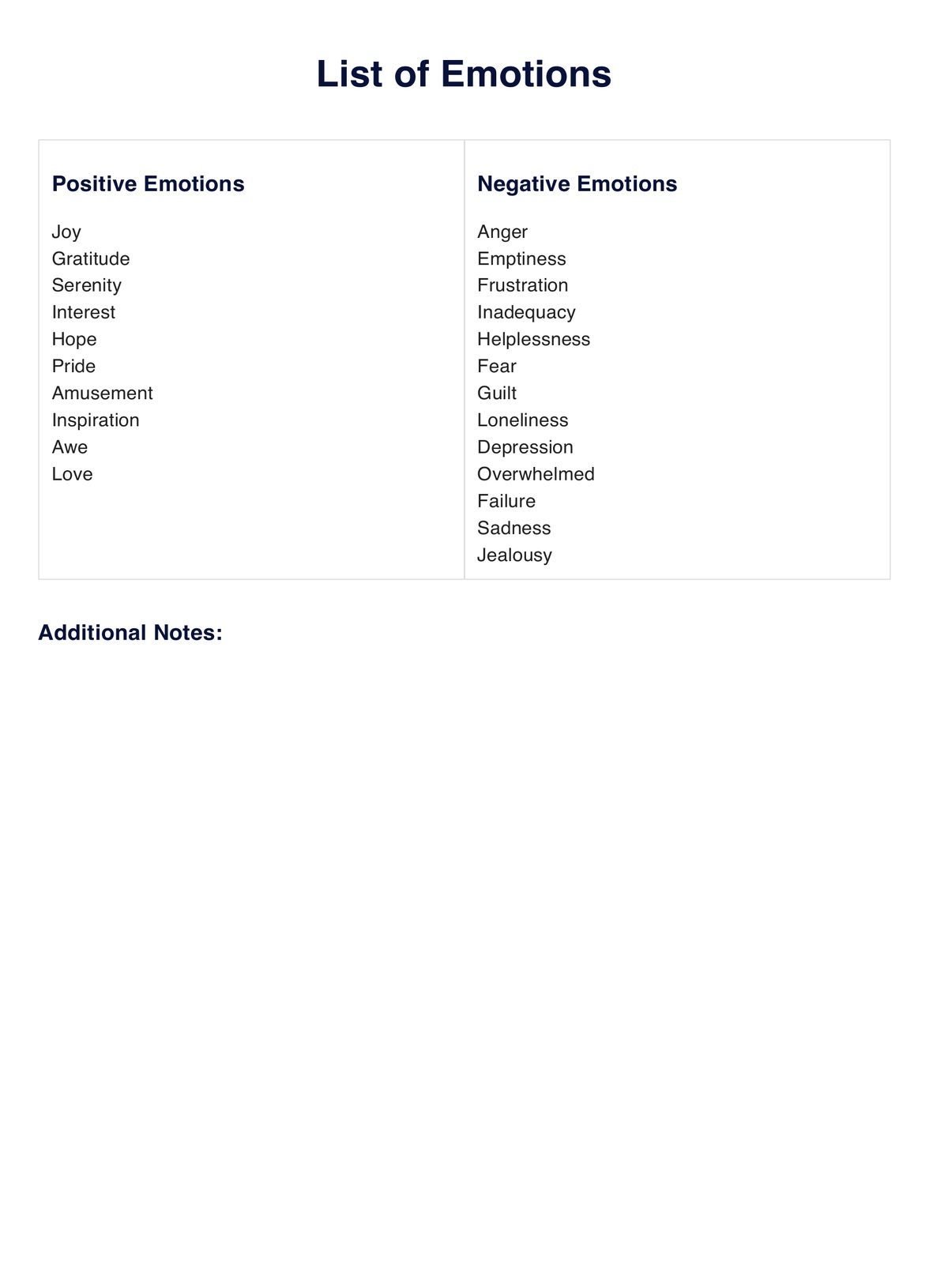Anyone struggling to find the correct words to describe how they feel. Therapists can also use this in their sessions to educate clients.

List of Emotions
Discover more about emotions and how they impact us daily. Download a free Emotions List PDF here.
Use Template
List of Emotions Template
Commonly asked questions
It supports positive mental health. Knowing how you may react in certain situations can support you during unprecedented times. It also serves as a great communication skill.
They are subjective. Not everyone will have the same emotional experience when feeling what you feel. This makes your feelings and emotions special to you!
EHR and practice management software
Get started for free
*No credit card required
Free
$0/usd
Unlimited clients
Telehealth
1GB of storage
Client portal text
Automated billing and online payments











